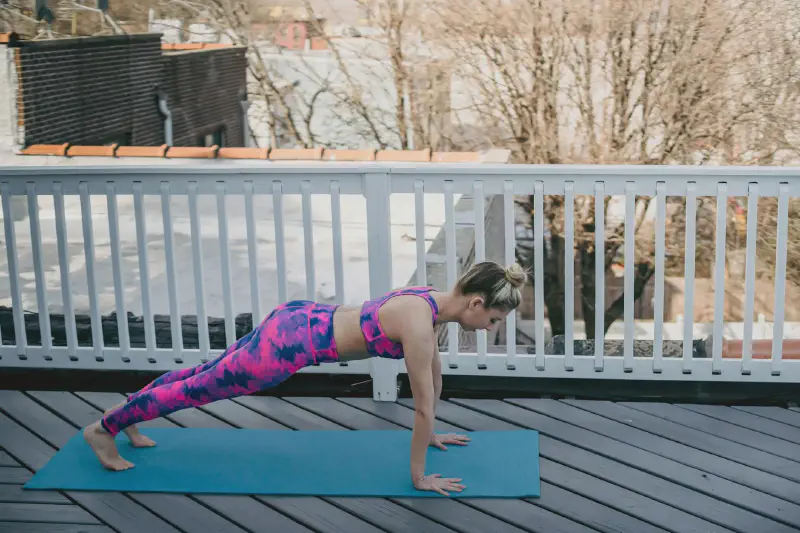Core Workouts for Runners: 10 Essential Exercises for Enhanced Performance
Introduction
For runners, a strong core is a cornerstone of success. The core muscles, comprising the abdominal, back, and hip muscles, play a pivotal role in stabilizing the body, generating power, and preventing injuries. By engaging in targeted core workouts, runners can unlock a range of benefits, enhancing their performance, reducing their risk of injuries, and achieving optimal running form.
10 Essential Core Exercises
1. Plank: This classic core exercise engages the entire core, strengthening the abdominal, back, and hip muscles. Hold a plank position with your forearms on the ground and your body in a straight line from head to heels.
2. Side Plank: This variation targets the lateral core muscles, improving balance and stability. Lie on your side with your elbow under your shoulder and your feet stacked. Lift your hips and hold the position.
3. Russian Twist: This rotational exercise strengthens the oblique muscles and improves core stability. Sit on the floor with your knees bent and your feet off the ground. Twist your torso from side to side, holding a weight or medicine ball.
4. Bicycle Crunches: This dynamic exercise engages both the obliques and the hip flexors. Lie on your back with your hands behind your head. Lift your legs off the ground and alternate touching your elbow to the opposite knee.
5. Leg Raises: This exercise targets the lower abdominal muscles, which are crucial for stabilizing the pelvis during running. Lie on your back with your hands under your hips. Lift your legs straight up towards the ceiling.
6. Mountain Climbers: This high-intensity exercise combines core engagement with cardiovascular endurance. Start in a plank position and bring your knees towards your chest in rapid succession.
7. Burpees: This full-body exercise challenges the core, legs, and upper body. From a standing position, squat down and place your hands on the ground. Jump your feet back into a plank position and return to the starting position.
8. Squat Jumps: This explosive exercise improves leg power and core stability. Stand with your feet hip-width apart. Squat down and jump up, extending your arms overhead.
9. Push-Ups: While primarily an upper body exercise, push-ups also engage the core muscles for stability. Start in a plank position and lower your body by bending your elbows.
10. Pull-Ups: This back-strengthening exercise also provides core support. Hang from a pull-up bar and pull yourself up until your chin reaches the bar.
Benefits of Core Training for Runners
- Improved Posture and Body Alignment: A strong core helps runners maintain an upright posture, reducing the strain on the back and joints.
- Reduced Risk of Injuries: By strengthening the muscles that support the spine and pelvis, core training helps prevent common running injuries such as lower back pain, knee pain, and plantar fasciitis.
- Enhanced Running Performance: A strong core provides a stable base for running, allowing runners to generate more power and improve their stride efficiency.
- Improved Balance and Coordination: Core training enhances balance and coordination, reducing the risk of falls and improving overall athleticism.
- Increased Muscle Imbalances: Core exercises help address muscle imbalances, which can lead to injuries and decreased performance.
Incorporating Core Workouts into a Running Plan
- Frequency: Aim for 2-3 core workouts per week.
- Intensity: Start with a manageable intensity and gradually increase the difficulty as you progress.
- Integration: Combine core exercises with weight training and bodyweight exercises for a comprehensive workout.
- Progression: Gradually increase the number of repetitions, sets, or resistance to challenge your core muscles.
Additional Considerations
- Warm-Up and Cool-Down: Always warm up before core exercises and cool down afterwards to prevent injuries.
- Proper Form and Technique: Pay attention to proper form to maximize the benefits and minimize the risk of injuries.
- Listen to Your Body: Rest when needed and avoid pushing yourself too hard.
Conclusion
By incorporating these 10 essential core exercises into their training regimen, runners can unlock a world of benefits. From improved posture to reduced risk of injuries and enhanced performance, a strong core is a key ingredient for success on the running track. Remember to be consistent with your core workouts, progress gradually, and listen to your body to reap the full rewards of this vital training component.
